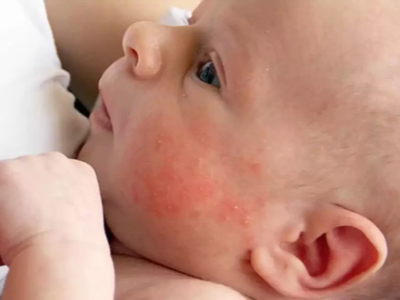Childhood Eczemas
Atopic dermatitis begins very early in life and is generally a group of diseases that causes concern for families. It appears in about 60% of cases during the first 2 months of life until the end of the first year. In 30% of cases, it first occurs by the age of 5, while only 10% experience their first attack between the ages of 6 and 20.
Common triggers or exacerbating factors include house dust, pollens, pet hair, and certain foods such as cow's milk, eggs, soy, peanuts, and fish. Any situation that disrupts the skin barrier, such as frequent exposure to water and soap, infections, and skin dryness, can also worsen the condition.
During winter, cold and dry weather and the use of woolen clothing can lead to flare-ups of the disease.
During a dermatological examination, we typically observe lesions on the cheeks and flexural areas that appear red, scaly, or weeping.
Treatment for atopic dermatitis can involve short-term topical medications, and in more widespread cases, allergy syrups can be used.
It is crucial to reshape everything that comes into contact with the baby's skin, such as soaps, moisturizers, detergents, and softeners, to suppress subsequent attacks.
Allergy tests (specific IgE) and, when necessary, skin tests (skin prick tests) may be performed.
Avoiding allergens is among the most effective methods of protection.
In summary, if skincare products for babies with atopic or sensitive skin are chosen appropriately and topical moisturizers and water-retaining emollients are preferred, the frequency and duration of attacks can significantly decrease. This way, both our patients and their families can continue their daily lives comfortably.





